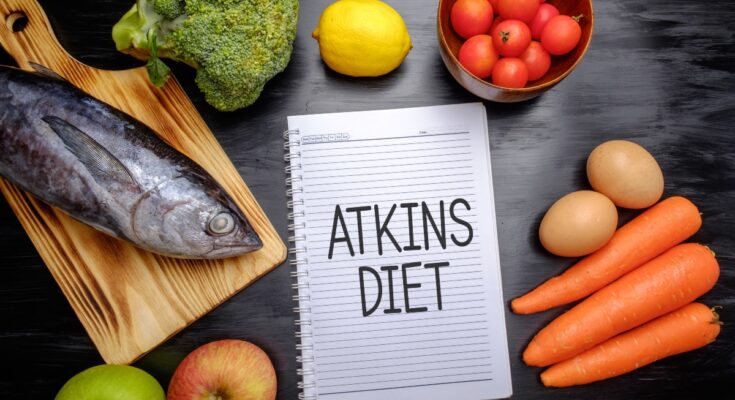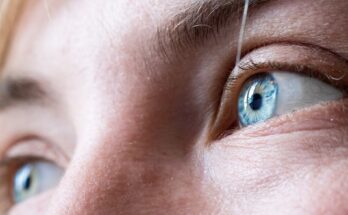The Atkins diet comes from the United States, was created in the 1960s by American cardiologist Robert C. Atkins and became very popular in the 1990s.
It is a low-carb nutritional regime, ie with a low carbohydrate content, which mainly exploits proteins and fats to satisfy the body’s energy needs and to promote weight loss.
It is therefore a high-protein diet, which does not guarantee a balanced intake of all nutrients.
The Atkins diet is divided into four phases, in which the first, the most difficult, involves the complete elimination of carbohydrates for two weeks, followed by a gradual reintroduction, always in limited quantities, in the subsequent phases.
Atkins diet: what is it and how does it work?
According to the creator, the Atkins diet allows you to lose weight in a short time: about 4 kg during the first week.
It is a low carbohydrate and high protein diet that uses proteins and fats to guarantee the body the energy it needs to function effectively, a role mainly played by carbohydrates.
The diet is rather rigid, it does not include calorie counting but only the elimination of some foods and the consumption of those indicated.
It was first used for the treatment of type 1 diabetes mellitus, and then became very popular for losing the extra pounds.
The basic idea is that insulin is the main cause of weight gain and weight regain. Thus, a reduced intake of carbohydrates would promote weight loss.
This insulin-carbohydrate association is based precisely on the action of insulin, which increases the absorption of glucose and fatty acids at the cellular level. It then stimulates lipogenesis and inhibits lipolysis, the organic processes of synthesis and elimination of fats.
According to Atkins, therefore, a diet rich in carbohydrates would stimulate the production of insulin, favoring the accumulation of fat.
Thanks to the limitation of carbohydrates, this nutritional approach therefore forces the body to use lipids and proteins as an energy source. In this way, weight loss would be facilitated thanks to the increase in the sense of satiety given by the proteins, with a consequent reduction in caloric intake and appetite, and in the daily energy expenditure.
Furthermore, in this way the production of anabolic hormones is stimulated which, combined with physical activity, can increase muscle mass and raise the basal metabolic rate.
The stages of the Atkins diet and what to eat
The Atkins diet, to achieve the goal of weight loss and maintenance, is divided into 4 phases: induction, continuation, pre-maintenance and maintenance.
It is a diet that is very reminiscent of the ketogenic diet, also based on a strong reduction in carbohydrates, which forces the body to look for alternative sources to produce energy.
Phase 1: induction
This is the most difficult phase, as you eliminate almost all carbohydrates from your diet. Only 20 g of carbohydrates per day from plant sources, i.e. from vegetables, are permitted.
The distance from what are considered the basic principles of healthy eating and the Mediterranean diet is quite significant. We go from the intake of about half of the daily calories to be taken through carbohydrates (about 45-60% according to nutritional guidelines) to about 10%.
The vegetables allowed are asparagus, broccoli, celery, cucumber, green beans and peppers, to be consumed to obtain the daily quota of carbohydrates.
Green light, however, for proteins, therefore for fish, shellfish, chicken, red meat, eggs and cheese, to be eaten with every meal. It is also not required to reduce or limit oils and fats.
Instead, no fruit, sweets, bread, pasta, cereals and alcohol. However, it is necessary to hydrate properly and drink at least eight glasses of water a day (more or less 2 liters).
This phase usually lasts 2 weeks and aims to get the body into the habit of burning fat and stabilizing the blood sugar level.
Stage 2: continuation or balance of weight
In the second step, there is a slight increase in carbohydrates (no more than 5 g), more vegetables and low sugar fruit and dried fruit.
Pasta, bread, cereals and sweets still remain off limits. This phase continues until 4-5 kg are missing from the desired weight.
Phase 3: pre-maintenance
This is the time when you get closer to the goal and you can gradually introduce other foods such as other fruits, starchy vegetables and whole grains.
You can add no more than 10g of carbohydrates per week. The purpose of this third phase is not to lose more than half a kilo per week, preparing the body to maintain weight.
You remain in this phase until you reach the desired weight.
Phase 4: maintenance
We have reached the moment in which the ideal weight has been reached and which should last for life. It is also the phase where you understand the maximum amount of carbohydrates you can eat to maintain the weight gained so far.
Even modest amounts of complex carbohydrates such as pasta or bread are allowed, but always keeping an eye on the scale.
Atkins diet: sample menu
Below, by way of example, an example of a daily menu.
| Breakfast | Egg stuffed avocado with ham, or two eggs always with ham and raw vegetables (such as lettuce) + olive oil. |
| Lunch | Cabbage and cheese salad, or fish (tuna, salmon, etc.) and vegetables (zucchini or artichoke hearts) + olive oil. |
| Cena | Steamed salmon and artichokes with homemade mayonnaise, or pork loin or beef tenderloin and cooked vegetables; or scallops wrapped in bacon and asparagus with lemon + olive oil. |
| snacks | Two snacks a day are allowed. They may include a granola bar, or celery and cheese (like Emmenthal or Greek feta) or olives and radicchio. |
You can drink coffee, tea, water, diet sodas and herbal teas. It is also possible to eat a pizza, called “Pizza Atkins”.
It’s not really a real pizza, since it’s a base made up of a dough of eggs and parmesan, topped with raw or cooked ham, mozzarella and zucchini.
Supplements
Since it is a rather restrictive diet, supplements are provided to take essential nutrients for health, such as some vitamins, mineral salts and fibers, to avoid nutritional deficiencies.
Therefore, multivitamin, antioxidant and dietary fiber supplements are recommended, necessary for intestinal health (such as those based on pectin, bran or guar gum).
Antioxidants in particular are very useful, since the Atkins diet is rich in fats, both animal (meat and fish) and vegetable (dried fruit) which increase the level of free radicals in the body.
In this way we try to counteract and prevent all those disorders and diseases related to oxidative stress.
What are the benefits of the Atkins diet?
According to supporters of this eating scheme, it is possible to lose weight already in the first two weeks. It is very likely to happen, indeed almost certain, if you follow the diet to the letter. However, it is in the long run that the validity of a diet is evaluated. In fact, numerous studies show that low-carb diets are no more effective at losing weight than regular low-calorie weight loss diets.
It seems, in fact, that those who follow low-carb diets regain, over time, all the weight lost and even a few extra kilos.
Carbohydrates, in fact, provide at least half of the calories needed by the body, so with the Atkins diet the loss of too many kgs is due to a low overall caloric intake, precisely due to the reduced intake of carbohydrates.
We also eat less because proteins and fats give a sense of satiety and fullness which allows you to curb your appetite and hunger attacks.
Furthermore, supporters of this nutritional approach emphasize the aspect of prevention or treatment for certain disorders or diseases such as metabolic syndrome, obesity, diabetes, hypertension and diseases affecting the cardiovascular system. However, these are typical effects of weight loss, which already by itself reduces or prevents the risk factors for this type of pathology.
The central point is that scientific evidence has not yet demonstrated the effective validity of this diet and whether all these potential benefits last over time or affect longevity.
In fact, some researchers point to the significant amount of animal-based fat and protein in the Atkins diet and how they can increase your risk of cardiovascular disease or even some cancers in the long run.
Does the Atkins diet work?
Despite the results obtained with many sacrifices, nutritionists consider this type of diet not effective in the long run.
In fact, even if they allow you to initially obtain a rapid reduction in body weight, most of the kg lost is not due to the reduction of body fat but to the loss of fluids. The annoying “yo-yo effect” is therefore just around the corner.
Furthermore, the diuretic effect of low-carbohydrate diets is due to the glycogen-water ratio: the reduction of carbohydrates pushes the body to use glycogen, mainly stored in the liver and muscles, as an energy source. It is a molecule that can be broken down when needed to produce glucose.
According to some scientific studies, the reduction of each gram of muscle glycogen is associated with the loss of about 3 g of fluids.
For this reason,…




